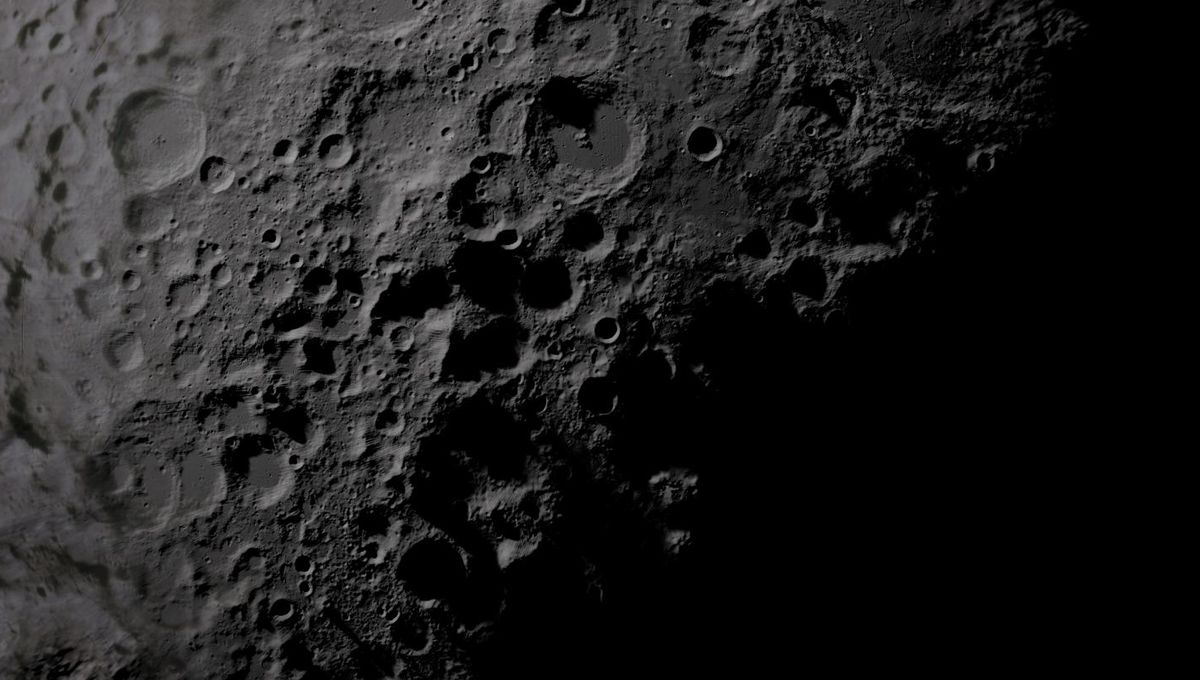
Some areas of the Moon have never seen sunlight. Within certain craters, mainly around the polar regions of the Moon, there are bits that have never seen the light of day and never will. In those regions, spacecraft have determined that deposits of water ice are present. And that’s where space agencies are planning to send rovers, landers, and, in a few years, humans.
But how come sunlight never reaches those areas? It is all down to the tilt of the Moon. Consider the Earth. With a tilt of 23.5 degrees with respect to the orbital plane, we have times when the Northern Hemisphere is pointing toward the Sun (Boreal Summer or right now), when it is pointing away (Austral summer), or when both Hemispheres get the same amount of light (fall and spring). But this is not the case for the Moon.
Its tilt with respect to the Earth’s orbit around the Sun is 1.5 degrees. The Moon is pretty much pointing vertically. This means that no matter when the motion of the Moon around the Earth, the rays of the Sun are hitting the Moon almost perpendicularly. So the equatorial regions are getting lots of light, but it is very easy to cast long shadows at the poles. It’s always late afternoon in the dead of winter in the lunar polar regions.
A single mountain there would not create permanent night. As the Moon rotates, the shadow would too. But if you have a rimmed crater, things would be different. The bottom and part of the wall would never get sunlight. The Sun would always be behind the rim.
There is water in those craters
Regions of permanent darkness have been nicknamed cold traps. The reason for it will become obvious in a second. The temperature in these shadowed areas always remains below -160°C (-260 °F). When ice forms there, it stays there. It is so cold that ice under those temperatures, even in a place without an atmosphere, behaves like a rock. It will stay put for a billion years.
Both poles have these cold traps but 60 percent of them are found beyond 80 degrees of latitude on the South Pole. That’s why the region has attracted such high interest from space agencies. Russia’s Luna 25 aims to get there in a few days. Followed by India’s Chandrayaan-3, a few days later.
Automatic missions will also come from China with the Chang’e-7 lander and rover combo expected to get there in 2026 and a private mission from Jeff Bezos’ Blue Origin. And then there is Artemis 3. The mission to take humans back to the Moon is currently scheduled to take place in December 2025.
Due to SpaceX’s Starship blowing up in the air and damaging the launch pad, resulting in major delays, Artemis 3 might instead become a different mission with no landing there.
Where does the water on the Moon come from?
There is a mixture of sources of water on the Moon and it’s not just ice in the cold traps. Some can be found in hydrated minerals, and even beads of glass that formed after the impact between the Moon and smaller bodies in the Solar System.
If we are considering water molecules themselves and not as a possible source of material for a future settlement, water is found everywhere on the surface of the Moon. Sure there is plenty of ice in the shadowed craters but there are even water molecules in the dust grains of the sunlit regions.
Until more research is done, the source cannot be completely pinned down. Ancient volcanic processes have contributed to it. Comets and icy micrometeorites are also believed to be major players, but the interaction between the lunar soil and the plasma in the solar wind could end up making water.
Source Link: There Are Places On The Moon That Never See Sunlight – Here's Why